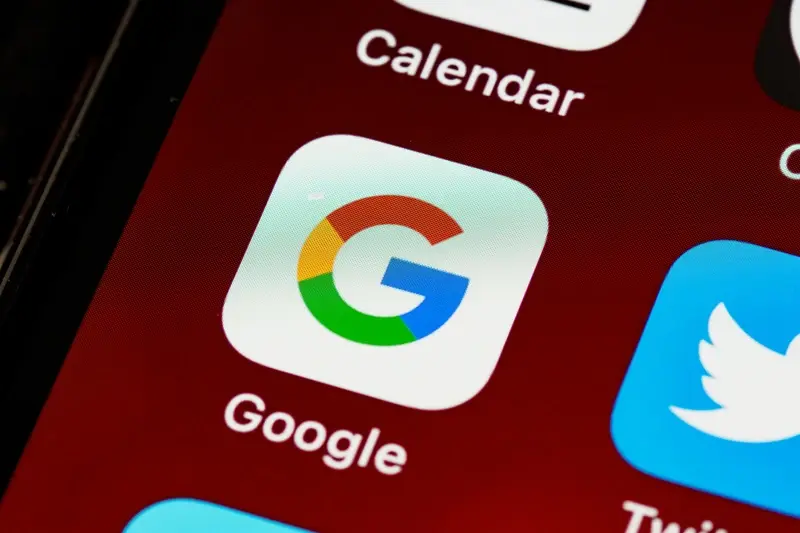What Makes Competitor App Store Pages Convert Better?
Ever looked at a competitor's app in the store and wondered why their conversion rates are crushing yours? You're not alone. After years of building apps and watching some succeed wildly while others barely get noticed, I can tell you that app store optimisation isn't just about having a decent app—it's about understanding what makes people tap that download button.
The thing is, most developers think ASO is just about keywords and nice screenshots. But honestly? That's only scratching the surface. Your competitors who are converting browsers into downloads understand something fundamental: every element on their store page is working together like a well-oiled machine. From their app icon that catches the eye in search results, to their screenshots that tell a story, to their description that addresses real user pain points.
I've seen brilliant apps fail because their store presence was rubbish, and I've watched mediocre apps thrive because they nailed their app store marketing. It's a bit mad really—you can spend months perfecting your app's functionality, but if your store page doesn't convert, nobody will ever see how good your app actually is.
The best app store pages don't just showcase features; they demonstrate the transformation users will experience after downloading
Throughout this guide, we'll break down exactly what your successful competitors are doing differently. We'll look at real examples, analyse conversion strategies that work, and give you practical steps to improve your own store presence. Because at the end of the day, understanding your competition isn't about copying them—it's about learning what works and making it even better for your users.
Screenshots That Actually Sell
I've looked at thousands of app store pages over the years, and honestly? Most screenshots are doing absolutely nothing to sell the app. They're just... there. Taking up space. It's a bit mad really, because your screenshots are probably the first thing potential users will look at after your icon—and you've got about 3 seconds to grab their attention before they scroll past.
The biggest mistake I see is developers treating screenshots like a user manual. They'll show every single screen in order, starting with the login page (seriously, don't do this). Nobody cares about your login screen; they want to see what value your app provides once they're inside.
Here's what actually works: lead with your strongest feature. If you've built a fitness app, don't show the onboarding flow first—show someone smashing their workout goals with your app. If it's a productivity app, show how organised and in-control users feel when they use it. Start with the outcome, not the process.
The Story Your Screenshots Should Tell
Your screenshots need to work together to tell a story. Think of them as a mini movie trailer for your app. The first screenshot grabs attention with your main benefit, the second shows how easy it is to get started, and the third demonstrates the key features in action. But here's the thing—each screenshot also needs to work on its own, because users might not look at all of them.
One trick that works really well is adding text overlays that highlight specific benefits. Not just feature descriptions, but actual user benefits. Instead of "Real-time notifications," try "Never miss an important update." See the difference? You're selling the outcome, not just the feature.
App Store Copy That Hooks Users
Right, let's talk about the words that actually get people to download your app. I've seen brilliant apps fail because their store copy was boring as watching paint dry—and I've seen mediocre apps succeed because they nailed their messaging. It's honestly one of the most overlooked parts of app store optimisation.
Your app description has about 3 seconds to grab someone's attention before they scroll past. That first line? It needs to hit hard. Don't waste it on "Welcome to our amazing app" nonsense. Jump straight into the problem you solve or the benefit you deliver. Something like "Stop losing receipts" or "Find parking in 30 seconds" works because it speaks directly to a pain point.
The Hook Formula That Works
Here's what I've learned from analysing thousands of app store pages: the best converting copy follows a simple pattern. Lead with the main benefit, back it up with social proof (downloads, ratings, awards), then list your key features as benefits rather than technical specs. Nobody cares that you have "advanced algorithms"—they care that you'll help them lose weight faster.
Study your competitors' descriptions but look at what they're NOT saying. Often the biggest opportunities are in the gaps they've missed.
Keep your sentences short and punchy. Use bullet points to break up walls of text. And for the love of all things digital, don't stuff keywords so hard that it sounds like a robot wrote it. The app stores are smart enough to understand natural language these days, so write for humans first, algorithms second.
One last thing—your description should answer the question "what's in it for me?" within the first 50 words. Because if users can't figure that out quickly, they'll move on to an app that can.
Reviews and Ratings That Build Trust
Let's be honest—most people check the reviews before downloading anything. I mean, you wouldn't buy a washing machine without reading what other people thought about it, would you? The same goes for apps; users want to know they're making a smart choice.
Here's what I've noticed after years of watching app store performance: its not just about having loads of five-star reviews. Sure, a high rating helps, but what really builds trust is having authentic, detailed reviews that address real user concerns. When I see an app with nothing but generic "Great app!" reviews, I get suspicious—and so do potential users.
The apps that convert best have reviews that tell stories. They mention specific features, describe how the app solved a problem, or even constructively criticise areas for improvement. These feel genuine because they are genuine. A mix of four and five-star reviews with thoughtful feedback often performs better than a wall of perfect scores.
The Power of Developer Responses
One thing competitors often overlook? Responding to reviews. When developers take time to thank users for positive feedback or—more importantly—address negative concerns publicly, it shows they care about their users' experience. I've seen apps turn around poor ratings simply by being responsive and showing they're actively improving based on feedback.
Watch how successful apps handle their one and two-star reviews. They dont ignore them or get defensive. Instead, they acknowledge the issue, explain what they're doing to fix it, and often provide direct contact information for further support. This turns a negative into a positive demonstration of customer service that other potential users will notice.
Understanding Your Competitors Keywords
Right, let's talk about competitor keywords—because honestly, if you're not looking at what your competition is doing, you're basically flying blind. I've seen so many app developers spend months perfecting their app store optimisation strategy, only to discover they've been targeting completely different keywords than the ones actually driving downloads in their space.
The thing is, your competitors have probably already done the hard work of figuring out which keywords convert. They've tested, failed, adjusted, and found what works. You can learn from their successes (and their mistakes) without going through all that trial and error yourself.
Finding What Actually Works
Start by downloading the top 5-10 apps in your category and really study their store pages. Look at their titles, subtitles, and descriptions. What keywords keep appearing? Which phrases do they use repeatedly? There's usually a pattern—and that pattern tells you what's working in your market right now.
Pay attention to their keyword density too. If every competitor is mentioning "task management" but only one talks about "productivity tracking," that's valuable intelligence about what users are actually searching for.
The apps that dominate app store search results aren't necessarily the best apps—they're the ones that best understand what their potential users are typing into the search box
But here's where it gets interesting—don't just copy what they're doing. Look for the gaps. What keywords are they missing? What user problems are they not addressing in their copy? Sometimes the biggest opportunities come from the keywords your competitors are ignoring, especially if you can spot an emerging trend they haven't caught onto yet.
Video Previews That Convert Browsers
App preview videos are your chance to show—not tell—what your app actually does. But here's the thing, most developers get this completely wrong. They create these lengthy videos that try to showcase every single feature, when really people just want to see the core value proposition in action.
I've tested this extensively across different app categories, and the sweet spot is always the first 3-5 seconds. That's literally all you have before someone swipes away. Your video needs to hook them immediately with the main benefit, not a fancy logo animation or company branding. Nobody cares about that stuff when they're browsing the App Store.
The most effective preview videos I've seen follow a simple pattern: problem, solution, benefit. Show the pain point, demonstrate how your app solves it, then highlight what the user gains. All within 15-20 seconds maximum. Anything longer and you've lost them.
What Actually Works in App Preview Videos
Based on conversion data from dozens of apps we've launched, here's what consistently performs:
- Lead with the core feature that solves the main problem
- Use real device frames, not floating UI elements
- Show actual user interactions—taps, swipes, gestures
- Include brief text overlays for context (but keep them minimal)
- End with a clear outcome or result the user achieves
- Keep the total length under 30 seconds
One mistake I see constantly? Videos that focus on how the app works instead of what it does for the user. People don't want a tutorial; they want proof that downloading your app will make their life better somehow. Show the transformation, not the process.
And here's something most people don't realise—App Store videos autoplay without sound. Design your video to work perfectly in silence, then add audio as a bonus for people who turn it on.
App Icons That Stand Out
Your app icon is basically your shop front—it's the first thing people see when they're scrolling through search results or browsing categories. And honestly? Most app icons are pretty forgettable. They blend into this sea of similar colours, fonts, and design choices that make it impossible to stand out.
I've seen countless apps with great functionality fail to get downloads simply because their icon didn't grab attention in those crucial few seconds. Users make split-second decisions about whether to even read your app title, let alone tap through to your store page. Your icon needs to work harder than ever.
What Makes Icons Actually Work
The best-performing icons I've analysed follow some clear patterns. They're simple enough to be recognisable at tiny sizes—remember, people are seeing these on mobile screens, often in lists with dozens of other apps. Complex designs with lots of detail just turn into muddy blobs.
Colour choice is massive here. You want something that pops against the app store's white background but doesn't clash horribly with iOS or Android's design language. I always tell clients to check how their icon looks next to their main competitors' icons because that's exactly how users will see them.
Test your icon at actual size on different devices before finalising it. What looks great on your desktop monitor might be completely illegible on a phone screen.
Typography in icons is tricky territory. If you must include text, keep it to one or two characters maximum. Full words rarely work unless they're part of a very established brand. The most successful icons tend to use symbols or simplified representations of what the app does rather than trying to cram everything into 1024 pixels.
- Keep it simple—complex designs don't scale down well
- Use colours that contrast with the app store background
- Avoid tiny text that becomes unreadable at small sizes
- Test how it looks alongside competitor icons
- Consider how it appears in different contexts (search results, categories, etc.)
- Make sure it represents your app's core function clearly
User Onboarding Through Store Pages
Here's something most developers get wrong—they think onboarding starts after someone downloads their app. Actually, it starts the moment a potential user lands on your store page. Your app store listing is the first step in your onboarding process, and its job is to set proper expectations while getting people excited enough to hit that install button.
I've seen too many apps with brilliant onboarding flows inside the app, but their store pages tell a completely different story. The messaging doesn't match, the screenshots show features that aren't immediately obvious, and users end up confused or disappointed when they open the app for the first time. That disconnect kills retention faster than almost anything else.
Setting Clear Expectations
Your store page should act like a preview of whats coming. If your app has a tutorial or walkthrough, your screenshots should mirror those same steps; if your apps main value comes from a specific feature, that feature should be front and centre in both your description and visuals. The goal is to eliminate surprises—good or bad.
Look at how successful apps like Headspace do this. Their store page doesn't just show you meditation screens; it shows you exactly what the experience feels like, what you'll learn, and how the app guides you through each session. By the time you download it, you already know what to expect from your first session.
Priming Users for Success
The best store pages actually start teaching users how to get value from the app before they even install it. Use your description to explain not just what the app does, but how to use it effectively. Mention any setup steps, highlight key features users should try first, and give them a roadmap for success. This pre-education makes your actual in-app onboarding much more effective because users arrive with context and motivation already built in.
When you're thinking about how to structure your store page content, consider the psychology behind creating seamless user onboarding experiences that start before the download and continue into the app itself.
Measuring What Actually Works
Right, so you've looked at your competitors screenshots, analysed their copy, studied their keywords—but how do you know if any of this research is actually helping your conversion rates? I mean, you can spend weeks diving into competitor ASO data, but without proper measurement, you're basically flying blind.
The thing is, most people focus on vanity metrics like impressions or even downloads. But here's what really matters: your conversion rate from impression to install. If your competitors are getting 15% conversion and you're stuck at 8%, that tells you everything you need to know about whose app store page is working better.
Testing Your Findings
App Store Connect and Google Play Console give you the basics, but honestly, the data can be a bit patchy. What I do is track everything in weekly chunks—conversion rates, keyword rankings, and competitor movements. You want to see patterns, not just random daily fluctuations.
When you implement changes based on competitor research, test one element at a time. Change your screenshots this week, monitor for a fortnight, then maybe test new copy. I know it's tempting to change everything at once, but you'll never know what actually moved the needle.
The best app store optimisation happens when you combine competitor insights with your own user behaviour data
Track your keyword positions too—if a competitor suddenly jumps up the rankings for a term you're targeting, dig into what they changed. Sometimes it's their recent app update, sometimes it's fresh screenshots or copy tweaks. The key is staying alert to these shifts and understanding what's driving them in your market.
Conclusion
Right, we've covered a lot of ground here—from screenshots that actually make people stop scrolling to app icons that don't get lost in the crowd. But here's what I want you to take away from all this: your competitors aren't winning because they got lucky. They're winning because they understand something you might be missing.
The best converting app store pages don't just look pretty; they solve problems before users even download the app. They answer the "what's in it for me?" question within seconds. And honestly, most apps fail at this basic level. I've seen brilliant apps with terrible store pages get completely overlooked, while mediocre apps with smart positioning dominate their categories.
You know what separates the apps that convert from the ones that don't? Its not fancy graphics or clever copy. It's clarity. Users need to understand what your app does, why they should care, and how it'll make their life better—all before they reach your third screenshot. If you're making them work to figure out your value proposition, you've already lost them.
The mobile landscape changes fast, but these fundamentals don't. Whether Apple tweaks their algorithm next month or Google changes their review system, apps that focus on clear communication and genuine user value will always have an advantage. Start with one element—maybe your screenshots or your app description—and test different approaches. Small improvements in conversion rates compound quickly when you're dealing with thousands of potential users each month.
Your store page is often the first real interaction someone has with your brand. Make it count.
Share this
Subscribe To Our Learning Centre
You May Also Like
These Related Guides

What Makes App Store Screenshots Convert Better?

Which App Store Screenshots Beat Your Competitors Every Time?



